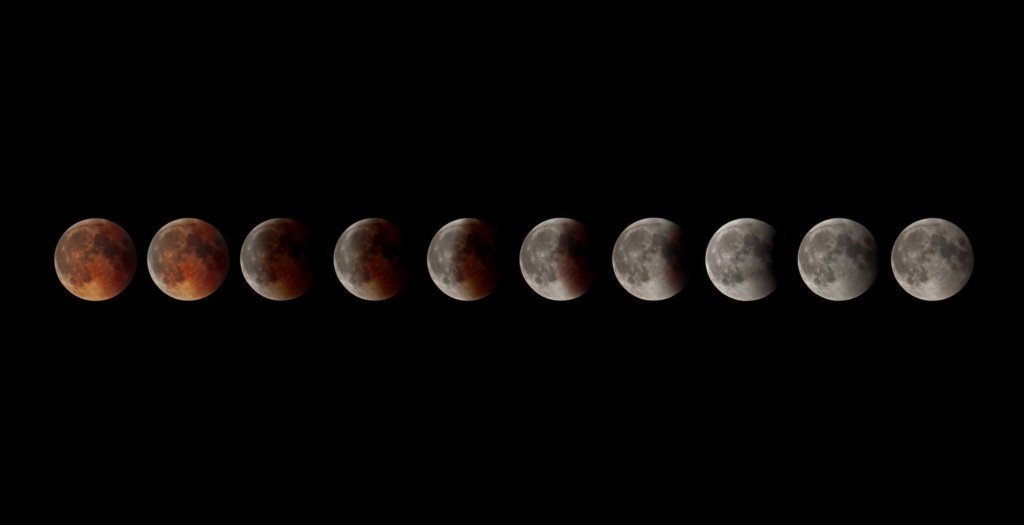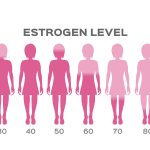Kristina Conner, ND
As naturopathic physicians, we usually find ourselves counseling patients about the determinants of health, which are disordered even in relatively healthy patients. One of the most common imbalanced determinants of health is “natural cycles”. It is clear what’s amiss when a patient has extreme circumstances, such as being a night shift worker. But what about the more typical scenario of the modern urbanite who may have fleeting contact with nature, but is essentially out of balance with the changes of daily, monthly, and seasonal life?
What we can do for these many patients is to move them towards more awareness and acceptance of natural rhythm. For women, this could take the form of counseling about the normal menstrual cycle for purposes of education and empowerment. I have discussed this idea in a previous article in NDNR,1 but the current discussion will specifically examine a single aspect of the natural menstrual cycle: the long-held belief that menstrual cycles should match the cycles of the moon. And if there is evidence to support this belief, what implications does this hold for counseling our female patients?
Common Reasons for Association
There is ample anthropological evidence that women once did associate menstrual and lunar cycles. The most common reason is obvious: the length of the lunar cycle, 29.5 days, is close to the typical menstrual cycle, 28-32 days. Another common reason for the association concerns the phases of the moon itself, which held more meaning to our ancestors than to most modern humans. Although we joke about the increase in strange and unruly behavior with the full moon, few of us are really conscious of this anymore. In fact, we have found evidence to refute the belief that behavior changes with the lunar cycle.2
To our ancestors, there was the belief that the dark moon (from last quarter to new moon) was a time of low activity, and the women’s menstrual cycles often coincided with this time. A common theme among practices at menarche was solitary, quiet activity; during this time they were prohibited from cooking, from interacting with males and non-menstruating women, sometimes from sleep, and even from looking at light. Likewise, members of the newly menstruating female’s group were prohibited from interacting with her, or sometimes simply mentioning her. Many of the same taboos were continued each menses for girls and women,3 reinforcing the idea that the menses was a time of separateness, reflective of the lunar changes.
Research
Lunar Cycling
There is also modern evidence to support the concept of menstrual cycling with the moon. Analysis of 312 women in 1977 showed that most women who had cycles of or around 29.5 days tended to ovulate during the dark phase of the moon (from last quarter to first quarter).4 Of the 312 women, 68 experienced lunar period cycles (29.5 days) and 47 of these ovulated in the dark phase. Also, women with irregular cycles still tended to ovulate in the dark phase. Speculation was that a natural rhythm of electromagnetic radiation during the dark lunar phase triggered timing of the menstrual cycle.4
A similar study of 305 young women found that one third had menstrual cycles close to 29.5 days (+ or -1 day), and almost two thirds started their cycle during the light half of the lunar cycle.5 A third study of 826 Swedish women ages 16-25 found that 28.3% had menses around the new moon, significantly higher than the 8.5%-12.6% range found at other times of the lunar cycle.6
Birth Rates and Complications
Not all aspects of fertility seem to be controlled by lunar cycles, however. Analyzing birth rates has yielded no correlation between birth rates or complications and the full moon or any lunar phase.7,8 An analysis demonstrated no predictable influence of the lunar cycle in a retrospective cohort across 62 lunar cycles that were identified from data from 1997 to 2001. The researchers found no significant differences in the frequency of births, route of delivery, births to multigravid women, or birth complications across the 8 phases of the moon or between documented high- and low-volume intervals of the lunar cycle.7
Mental Health and Behavior
Likewise, the evidence is mixed in supporting a connection between lunar cycles and mental health or other aspects of health, even ones assumed to have some connection. In an Australian study, there was no correlation found between lunar cycles and aggression or violent behaviors for in-patient psychiatric patients.9 Similar studies found no increase in victims of violence presenting to the emergency department (ED) with a new or full moon,10 or an increase in trauma patients with a full moon.11 However, one study found an increase around the new moon for female callers to a crisis hotline.12 Another study found an increase in hospitalizations due to gastrointestinal bleeding around the full moon.13
Modern Disruptions
So it seems that even if there was a correlation between health and the moon, it is not as strong in our current lives as it once was. The same may be said of the influence of the moon on menstrual cycles. While we certainly find a correlation in past cultures, evidence does not favor as strong an association currently, nor does there seem to be an ideal cycle between the moon and menses. Trying to make it relevant to modern patients may be as futile as insisting that they not drive cars or use artificial lighting. In addition, research is complicated not just by alterations in light exposure, but other changes resulting from modern lifestyle.
The addition of oral contraceptives may blunt normal changes during the cycle, complicating our understanding of what a normal cycle even is anymore. In a study of physiological changes in young women, researchers found a peak in alpha frequencies using electroencephalogram (EEG) during the mid-luteal phase, and an increase in performance tasks during the preovulatory phase, among other changes. These changes were not seen in the women on oral contraceptives.14
Lunar Cycle Effect on the Endocrine System
Past beliefs and current evidence intersect within the endocrine system, which does seem to be influenced by lunar cycles. In one study, there was an increase in visit requests due to thyroid conditions after the full moon.15 For established patients, an increase in visit requests was seen 3 days after the full moon, and for new patients 5 days after.15 In other animals, such as fish and birds, hormone levels and reproduction alter with lunar cycles, although the mechanism is not always clear.16
There are increases in prolactin levels seen with menstrual cyclicity.17 But the most promising hormonal link is melatonin, which may be the critical component to menstrual regularity. There are receptors for melatonin at both the level of the gonads as well as the pineal gland,17 so one would assume it has effects in both organs. There may be a link between sleep quality and moon phases, such as a decrease in sleep quality with the full moon.18 Since melatonin plays a significant role in sleep quality, we expect that melatonin secretion and / or function will be influenced by lunar cycles. This effect is found in women, although it is more likely to be apparent in women with altered sleep patterns (shiftworkers).19
Assuming we do find a stronger connection between endocrine function and timing of the menstrual cycle, and mechanisms for how this may work, how does this translate into workable advice for our patients? Until we get more specifics on how it occurs, there’s not much to change from the way we currently handle the topic. This discussion highlights the complexity of the endocrine body, and the need to treat it as a whole, rather than a series of parts. It also underlines the need to address such determinants of health with every patient, because much of the difference between lack of illness and true wellness lies in that foundation.
Our challenge as practitioners is nurturing a natural menstrual rhythm without imposing restrictions, such as a calendar. Even with the knowledge that a lunar menstrual cycle (menses around the new moon) may be the natural cycle for a significant percentage of women, we don’t know if that’s the ideal cycle for the woman sitting in front of us. What we can do is encourage a woman to become more aware of her cycle while educating herself about the lunar cycle, and discovering for herself whether there’s any correlation. In fact, this is not a much different discussion than general counseling about the menstrual cycle. The distinction is in the information we provide; the assurance that there are commonalities between menstruation and external natural cycles, but that there is not a best cycle.
As in other areas of patient health, we find that the best advice for patients is self-knowledge. But by becoming informed, we are becoming better guides. In the future, we may have more specific steps for women to achieve a cycle closer to natural, but we can also use awareness itself as the therapy. Learning about any natural cycle allows us to make it a part of our daily life, which will always be beneficial in restoring our balance with nature.
 Kristina Conner, ND graduated from Bastyr University in 2001. She completed her residency at the University of Bridgeport, College of Naturopathic Medicine. Dr. Conner is zealous about making classical naturopathic medicine pertinent to current practice. She is currently Assistant Professor at the National University of Health Sciences where she teaches in the subject areas of nutrition, women’s health, hydrotherapy, and naturopathic medicine.
Kristina Conner, ND graduated from Bastyr University in 2001. She completed her residency at the University of Bridgeport, College of Naturopathic Medicine. Dr. Conner is zealous about making classical naturopathic medicine pertinent to current practice. She is currently Assistant Professor at the National University of Health Sciences where she teaches in the subject areas of nutrition, women’s health, hydrotherapy, and naturopathic medicine.
- Conner K. Reclaiming the power of blood. ND News & Review. 2007;3(2):1.
- Foster RG, Roenneberg T. Human responses to the geophysical daily, annual and lunar cycles. Curr Biol. 2008;18(17):R784-R794.
- Grahn J. Blood, Bread, and Roses: How Menstruation Created the World. Beacon Press; Boston, MA: 1994.
- Cutler WB. Lunar and menstrual phase locking. Am J Obstet Gynecol. 1980;137(7):834-839.
- Friedmann E. Menstrual and lunar cycles. Am J Obstet Gynecol. 1981;140(3):350.
- Law SP. The regulation of menstrual cycle and its relationship to the moon. Acta Obstet Gynecol Scand. 1986;65(1):45-48.
- Arliss JM, Kaplan EN, Galvin SL. The effect of the lunar cycle on frequency of births and birth complications. Am J Obstet Gynecol. 2005;192(5):1462-1464.
- Morton-Pradhan S, Bay RC, Coonrod DV. Birth rate and its correlation with the lunar cycle and specific atmospheric conditions. Am J Obstet Gynecol. 2005;192(6):1970-1973.
- Owen C, Tarantello C, Jones M, et al. Lunar cycles and violent behaviour. Aust N Z J Psychiatry. 1998;32(4):496-499.
- Nuñez S, Péréz Mendez L, Aguirre-Jaime A. Moon cycle and violent behaviours: myth or fact? Eur J Emerg Med. 2002;9(2):127-130.
- Zargar M, Khaji A, Kaviani A, et al. The full moon and admission to emergency rooms. Indian J Med Sci. 2004;58(5):191-195.
- Kollerstrom N, Steffert B. Sex difference in response to stress by lunar month: a pilot study of four years’ crisis-call frequency. BMC Psychiatry. 2003;3:20.
- Román EM, Soriano G, Fuentes M, et al. The influence of the full moon on the number of admissions related to gastrointestinal bleeding. Int J Nurs Pract. 2004;10(6):292-296.
- Becker D, Creutzfeldt OD, Schwibbe M, et al. Changes in physiological, EEG and psychological parameters in women during the spontaneous menstrual cycle and following oral contraceptives. Psychoneuroendocrinology. 1982;7(1):75-90.
- Zettinig G, Crevanna R, Pirich C, et al. Appointments at a thyroid outpatient clinic and the lunar cycle. Wien Klin Wochenschr. 2003;115(9):298-301.
- Zimecki M. The lunar cycle: effects on human and animal behavior and physiology. Postepy Hig Med Dosw (online). 2006;60:1-7.
- Aleandri V, Spina V, Morini A. The pineal gland and reproduction. Hum Reprod Update. 1996;2(3):225-235.
- Rösli M, Jüni P, Braun-Fahrländer C, et al. Sleepless night, the moon is bright: longitudinal study of lunar phase and sleep. J Sleep Res. 2006;15(2):149-153.
19. Baker FC, Driver HS. Circadian rhythms, sleep, and





